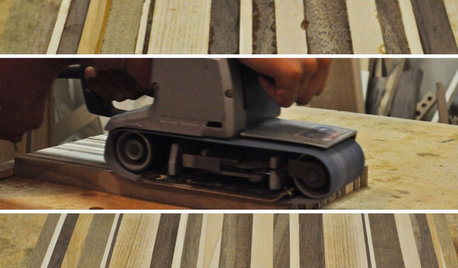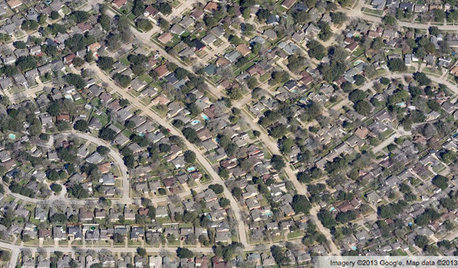human waste?
brdldystlu
14 years ago
Related Stories

FEEL-GOOD HOME21 Ways to Waste Less at Home
Whether it's herbs rotting in the fridge or clothes that never get worn, most of us waste too much. Here are ways to make a change
Full Story
MOST POPULAREasy Green: 23 Ways to Reduce Waste at Home
Pick from this plethora of earth-friendly ideas to send less to the landfill and keep more money in your pocket
Full Story
GREEN BUILDINGThe Future of Smart Design: Reuse, Reduce, Recycle
See why reducing waste in a home construction project should appeal to every architect, designer and client
Full Story
KITCHEN DESIGNHow to Choose and Use Ecofriendly Kitchen Appliances
Inefficient kitchen appliances waste energy and money. Here's how to pick and use appliances wisely
Full Story
DIY PROJECTSFashion a High-Quality Cutting Board From Scrap Wood
Waste not, want not. This DIY project saves scraps from the landfill, hones your woodworking skills and produces a gorgeous kitchen piece
Full Story
TINY HOUSESHouzz Tour: A Custom-Made Tiny House for Skiing and Hiking
Ethan Waldman quit his job, left his large house and spent $42,000 to build a 200-square-foot home that costs him $100 a month to live in
Full Story
SMALL HOMESHouzz Tour: Rolling With Simplicity in a Tiny House on Wheels
Just 240 square feet, this California home encourages efficient living — but there’s still room for yoga
Full Story
COMMUNITYGet a Bird's-Eye View of America's Housing Patterns
See the big picture of how suburban developments are changing the country's landscape, with aerial photos and ideas for the future
Full Story
LIFEThe Top 5 Ways to Save Water at Home
Get on the fast track to preserving a valuable resource and saving money too with these smart, effective strategies
Full Story
SMALL HOMESCan You Live a Full Life in 220 Square Feet?
Adjusting mind-sets along with furniture may be the key to happiness for tiny-home dwellers
Full StoryMore Discussions






folly_grows
joe.jr317
Related Professionals
Lyons Landscape Architects & Landscape Designers · Billerica Landscape Contractors · Bedford Heights Landscape Contractors · Mendota Heights Landscape Contractors · New Cassel Landscape Contractors · North Canton Landscape Contractors · Oxnard Landscape Contractors · Pueblo West Landscape Contractors · Augusta General Contractors · Avon Lake General Contractors · De Pere General Contractors · Janesville General Contractors · Little Egg Harbor Twp General Contractors · Seguin General Contractors · Sun Prairie General Contractorsanewgarden
folly_grows
folly_grows
joe.jr317
folly_grows
aufin
lkittle
joe.jr317
fosteem1
jawnn
equinoxequinox
Stormygale
Priswell